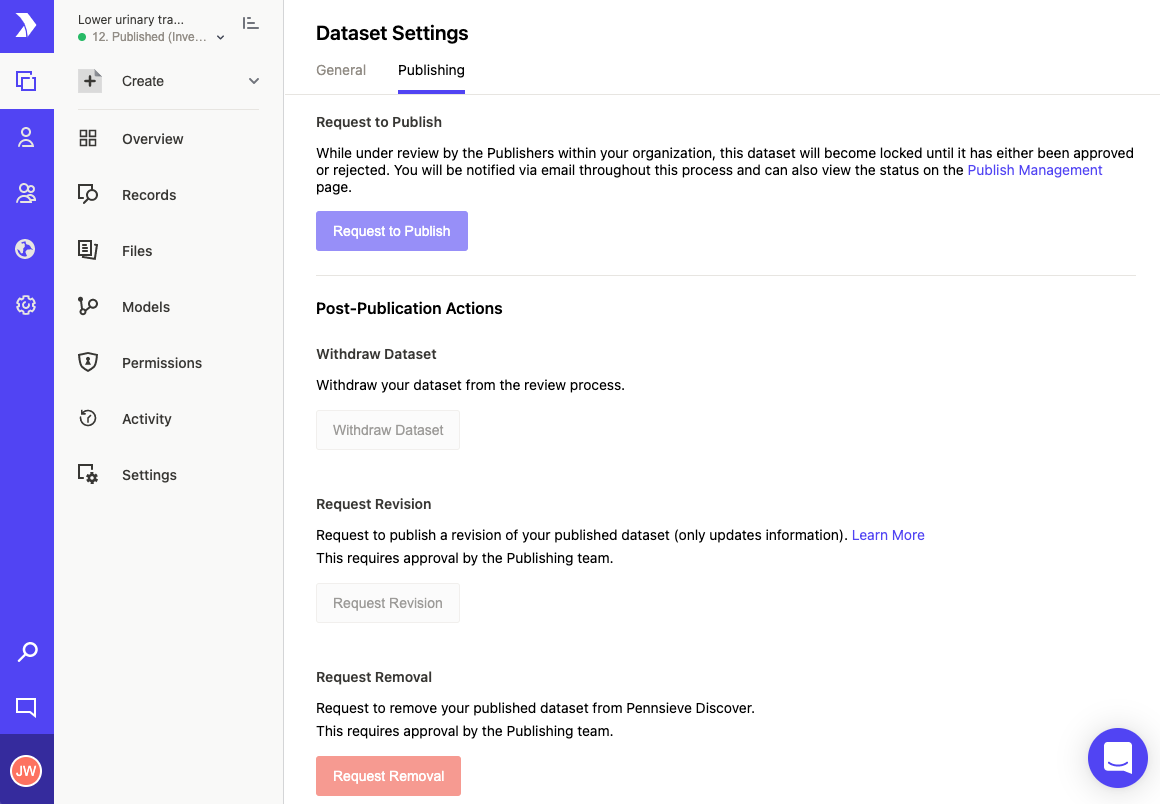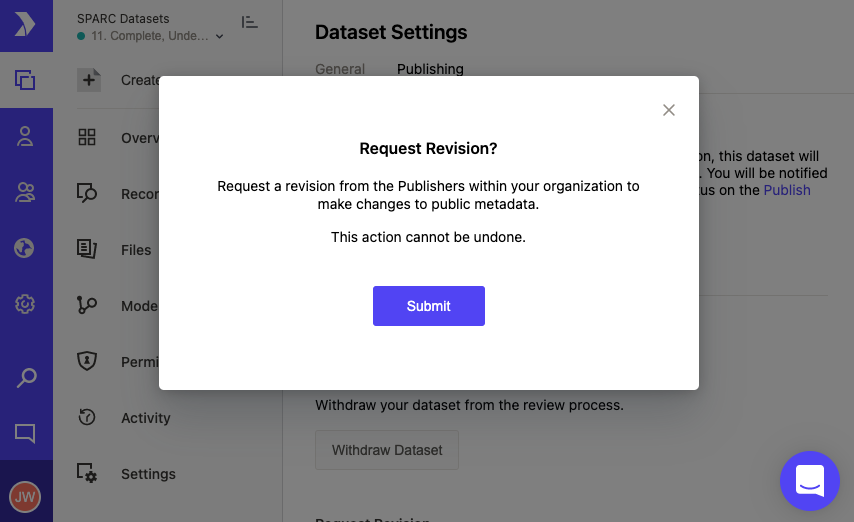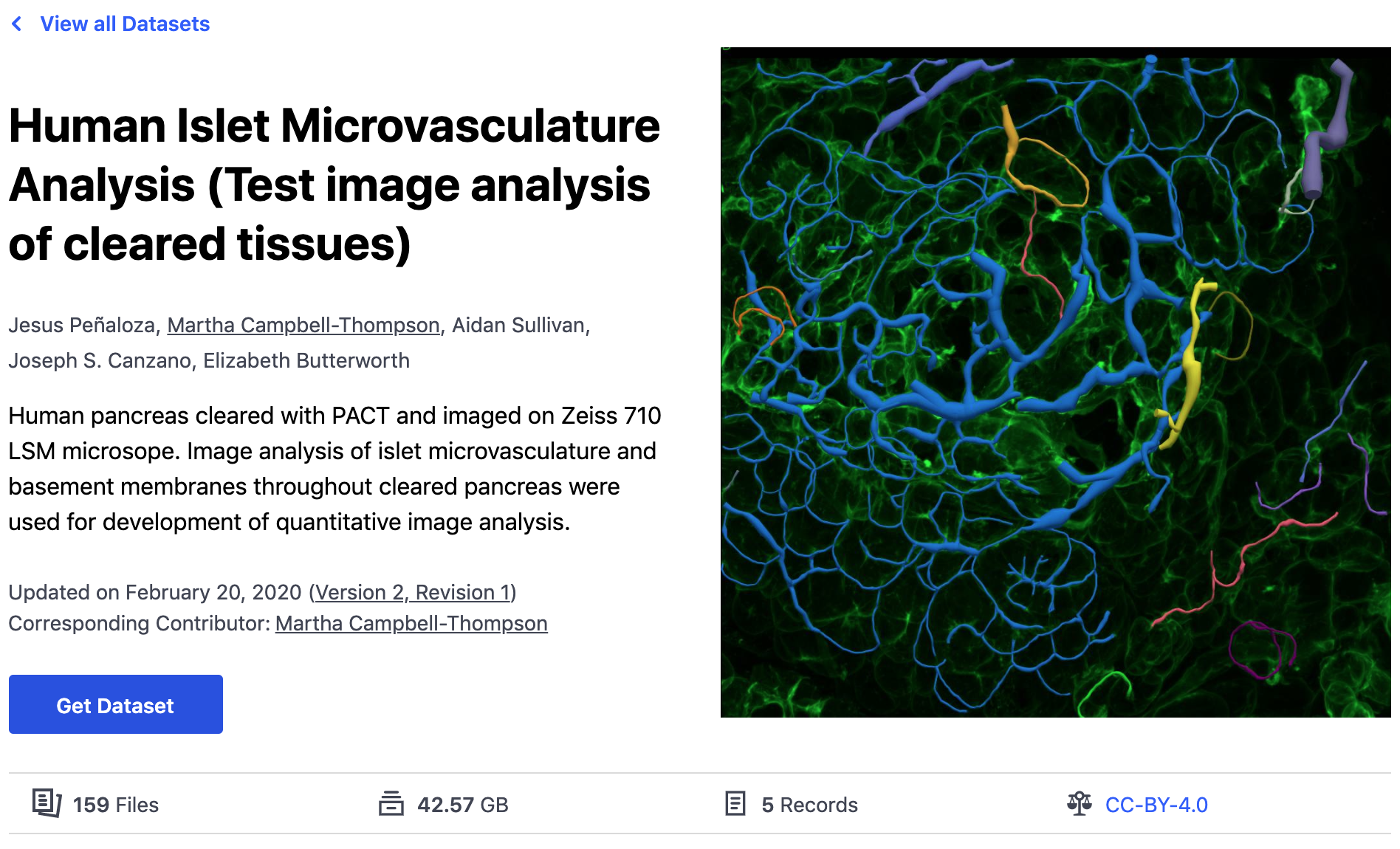Submitting a revised dataset for publication
What is the difference between submitting a new version of a dataset and creating a revision?
Overview
After a dataset is published to Pennsieve Discover, it is possible to update some of the metadata describing the dataset without publishing a new version of a dataset (and subsequently creating a new DOI). This can be helpful if you want to add tags, update collaborators (and their ORCID accounts), update the description or change other information that does not change the underlying data associated with the dataset (files and metadata records).
Specifically, creating a revision will update:
- The title of the dataset
- The contributors of a dataset
- The summary of the dataset
- The license of the dataset
- The tags associated with a dataset
- The description associated with the dataset
- The image associated with a dataset
The updated information will directly be visible on Pennsieve Discover, and be reflected in a revision file inside the published dataset. No files in the published dataset will be overwritten.
Need to update files, or metadata records?
If you do need to update files or metadata records, you will need to request to publish a new version as this will require a DOI update. Instead of updating the current version of the dataset, this will create a new version of the dataset, and associate a new DOI with the updated version.
How to create a revision?
After publishing a dataset, it is possible to create a new revision of the published dataset using the publication submission workflow.

Select the publishing tab in the dataset settings.
Click on the request revision button and select submit.

Click Submit to request the revision
Once this revision is accepted by the Publisher team, the latest version of the published dataset will be updated on Pennsieve Discover with the revised dataset information and the latest revision number will be displayed as part of the public dataset page on Pennsieve Discover:

Updated over 4 years ago